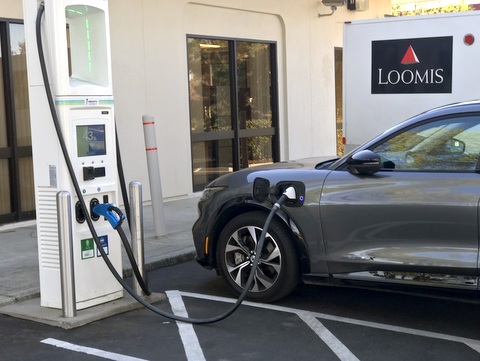Looking for Solutions for Juice for your Electric Car
Many people love the environmental appeal of electric vehicles (EVs). However, they are less excited about the possibility of finding charging points. EV infrastructure is much less widespread than gas stations—and the number of EV chargers is only part of the problem. What charging-related issues restrict EV growth and how can people begin tackling them?
1. Insufficient Numbers of Chargers
Many EV owners or those considering electric vehicles worry the cars will not have enough range to accommodate their driving habits. An EV is likely well-suited to a driver who takes approximately the same number of trips of around the same length per week, such as someone intending to use their electric vehicle to get to and from a full-time office job.

However, a self-employed consultant who makes house calls to clients all over the state or a touring musician using their car as the main mode of transportation would understandably have more challenges. That is primarily due to the unpredictability of their driving needs.
A 2023 global study of electric vehicle chargers showed the number would reach 45 million in 2027—a significant jump from the 4.2 million in 2023. However, home chargers accounted for more than twice the number of public ones represented in that 2027 forecast.
The study’s analysts said current government initiatives to increase the number of public chargers were insufficient to close the gap. They also recommended collaboration and interoperability between charging providers to address the fragmentation that makes it more difficult for people to find and use the available chargers.
Elsewhere, research published this year suggests making home charging more accessible and affordable could not solve the problem. Statistics showed 86% of EV drivers can use home chargers, but more than 59% still use public chargers weekly. The more progress made in getting chargers where people need them, the more open drivers will be to becoming EV owners.
2. Concentration of Charging Points
When people are in the market for vehicles, they must consider aspects such as price, safety and how well the automobiles align with their lifestyles. When a 2023 study queried people about the main barriers to EV ownership, charging-related concerns were second only to price. More specifically, 44% felt worried about charging point availability.

Charging infrastructure is not universally present, either. Although California has numerous charging options, there are comparatively fewer in parts of North Dakota, South Dakota and Montana.
Professionals working with marginalized communities have also pointed out how racial and income-related inequalities persist when decision-makers choose where to put EV charging stations. However, some are working to develop alternatives to meet needs, such as EV car-sharing programs. Lawmakers have also passed legislation that requires some cities to make targeted changes in favor of electric vehicle readiness.
Some states have programs to remove cost-related barriers to electric vehicle ownership. Numerous factors make EVs potentially more appealing for people earning lower incomes. For example, statistics suggest people could save up to $10,000 over the car’s life span due to not having to buy fuel at volatile prices and because EVs require less maintenance than gas-powered automobiles. Long-term and widespread improvements will take time, however.
3. Some Public Chargers Arn’t Functional
A charging point’s mere presence does not make it accessible for EV owners. Consider a 2023 study that found 20% of people visited chargers but did not replenish their cars’ batteries. Long lines and broken chargers were two of the most common reasons for such instances.
Addressing the inoperable chargers could take longer than some individuals realize because there is a shortage of electricians and technicians to install and maintain them. Investments in targeted training for people currently working in these roles and educational opportunities for those interested in this career path should help.
Short-term solutions include allowing people to book charging slots in advance or verify a charging point’s functionality. Some companies have addressed the second point by adding crowdsourced data to charging station maps. Then, people can read reviews or ratings to gauge the likelihood of showing up to a location and finding a working charging station.
Dedicated Strategies to Solve Pressing Needs
Many people agree curbing emissions is necessary for the planet’s sustainability. Increasing EV ownership rates is one way to do that. However, people will only feel tempted by that option if they believe electric vehicles will be convenient to use—and charge. The suggestions posed here could cause the necessary positive changes and all indications are solutions are in the works. It just may take time to get through this rough patch.

1 thought on “3 Key EV Charging Infrastructure Issues that need to be Addressed”